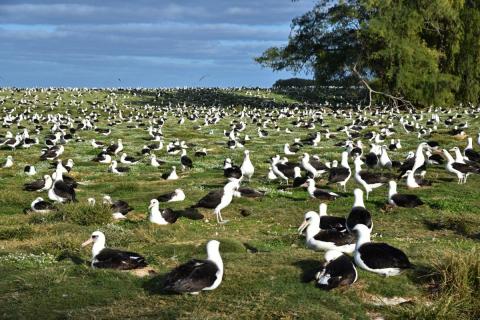
Imagine being half way across the Pacific ocean on a tiny island with two million birds. That’s what I did in February just before the world locked down and the atoll closed to visitors. We were so lucky to have the chance to visit this amazing place. It was a chance in a life time for me, and what a memory I now have as I sequester at home!
Island Conservation, a non-profit dedicated to conserving island ecosystems by removing invasive species, invited me and my sisters to visit Midway Atoll.
We flew to Hawaii and then another four hours west to Midway Island on the northern end of the Hawaiian archipelago. The flight was at night because the birds are settled down then and we wouldn’t hit any as we landed. The reason Midway has a runway at all is because the U.S. Fish and Wildlife Service and the Federal Aviation Administration maintain it for commercial and military flight emergency landings.
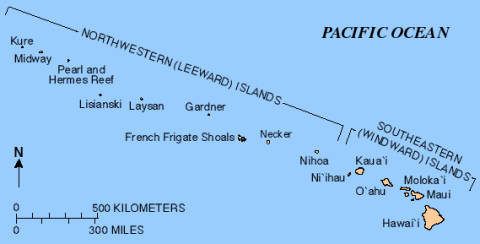
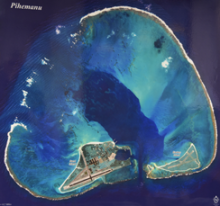
Midway Atoll is a ring-shaped coral reef with three coral islands. 28 million years ago a volcano erupted and over the eons slowly sank back into the ocean while the surrounding coral reef kept growing near the surface creating the atoll.
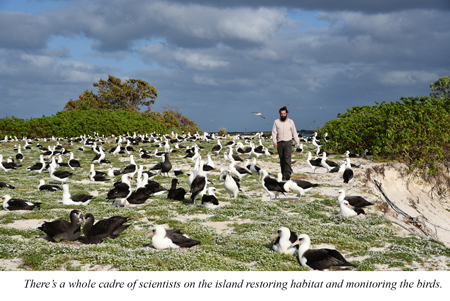
Pihemanu
The Hawaiian name for Midway Atoll is Pihemanu, which means “the loud din or sound of birds.” Two million birds can indeed make a cacophony of calls, whistles and groans. And the activity is dizzying. During the height of the breeding season there are over three million birds on the Atoll: over 1.2 million breeding Laysan Albatross, along with thousands more non-breeding immature birds practicing to be adults. And there are also 52,000 nesting Black-footed albatross. And then at night around a million Bonin petrels arrive flitting around like bats. It’s an intense experience. Almost anyone who has been in a seabird colony says it’s a spiritual experience. The birds have no predators on remote oceanic islands, so they have no experience of being afraid when on land. You can walk into the middle of a thousand nesting birds without disturbing a single one, although there are limits—you can’t get too close.
Albatross are extremely handsome birds, almost regal. Especially when they are quietly sitting on a nest brooding an egg. Their beauty lies in the subtle shading of colors around their eyes and face- and the way they carry themselves! More about that later…
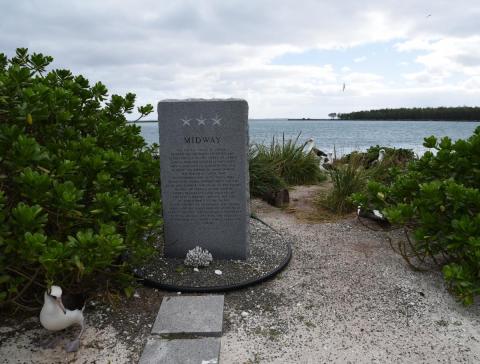
Midway Atoll has a rich history. The first visitors likely were Polynesians exploring in voyaging canoes. In the 1700s, when Asians and Europeans discovered the islands, people harvested the albatross for food, feathers and oil for centuries. Finally President Theodore Roosevelt created the National Wildlife Refuge system and in 1909 he designated the Northwest Hawaiian islands the second refuge.
From 1941 until 1993, Midway housed a military base. It is well known as the site of a 1942 battle that became the turning point of World War II in the Pacific. There are lots of buildings remaining: barracks, a mess hall, even a functioning bowling alley and an abandoned movie theater.
We stayed in the barracks which were quite comfortable. When stepping outside though, we were instantly in another world.
Albatross are the ultimate oceanic bird
Albatross are in the air most of their lives spending 95% of their time at sea flying. Since most live over fifty years, an albatross can cover 3.7 million miles in a lifetime. The only way a bird could do this is by using an incredibly small amount of energy while flying. They don’t beat their wings and they don’t even need to hold their wings outstretched because the wing bones lock in place. The albatross are superbly engineered to take advantage of the ferocious winds in the open ocean.
An albatross is constructed more to float in the air than to fly. “It drifts in the atmosphere at high speed, but itself remains immobile – an immense bird holding stock-still yet shooting through the wind.” (Carl Safina, The Eye of the Albatross).
Staying within 50 feet of the surface while hunting for food, an albatross sees details in the immense monotony of the ocean surface that looks homogeneous to our eyes. They have an acute sense of smell and can even locate the aroma of a plankton bloom that means food. Plankton are the base of most oceanic food webs and their presence signals abundant life. All albatross eat mostly squid, but they’ll eat anything they can catch dead or alive.
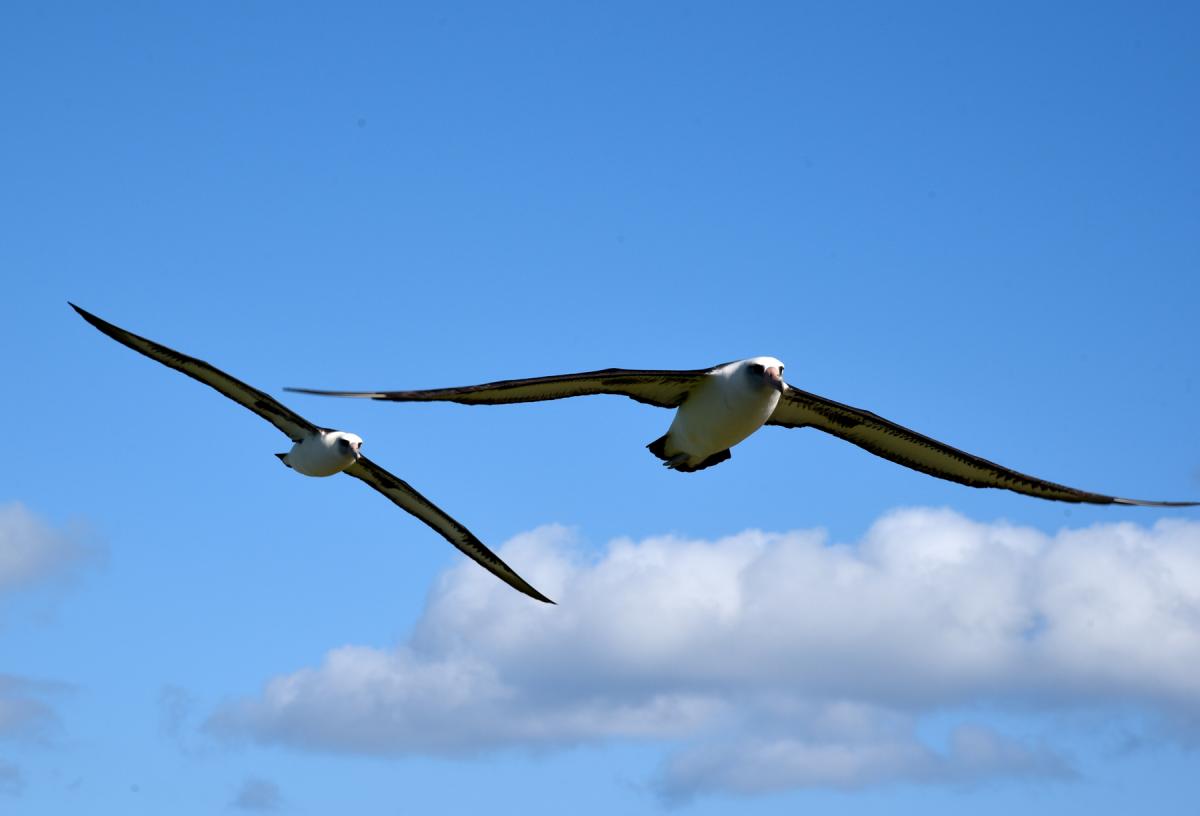
Albatross mate for life

In November, albatross start returning to the atoll, males first, landing in the same area year after year. If a pair has been together for years, they may copulate immediately and then return to feed at sea until the female has adequate nutrition for her growing egg. But if the birds are a newly-bonded pair, they might need to perform their courtship dance to solidify their relationship before mating and returning to sea to feed.
The male and female of a pair return almost at the same time. After laying an egg, the female returns to sea to feed and the male sits on the egg for about a week, until she returns. Then he goes to feed for two-three weeks. The pair continues sharing shifts until the egg hatches at around 65 days.
The male and female of a pair return almost at the same time. After laying an egg, the female returns to sea to feed and the male sits on the egg for about a week, until she returns. Then he goes to feed for two-three weeks. The pair continues sharing shifts until the egg hatches at around 65 days. After fledging, a chick spends five years at sea feeding and finally returns to its birth colony to practice the pair-bonding dance with the other adolescents.
It’s Dance Time
In the midst of the colony, groups of adolescents appear to be hanging-out just as any teenagers would, discussing the latest dance steps. The dance involves beak-to-beak clacking and head shaking.
“Albatrosses shake-rattle-and-roll dances look like a game of Simon Says, but with everything done so fast that it’s hard to tell who is leading. Point to the sky, scream, get on your tiptoes, clack your bill, clack and shake your head, flare both wings, high step nodding head. It’s a frenzy of movement rapidly changing. Never the same, but both birds appearing to do the same thing at the same time.” (Carl Safina, The Eye of the Albatross).
And they do this over and over and over again because this relationship must last 50 years – and 95% of their life they’re separated at sea. And once a pair has found each other, the birds spend four-five years dancing together on the breeding grounds before they settle down and even attempt to lay an egg.
Oldest Known Bird
Wisdom, a Laysan albatross, is at least 68 years old. She has raised at least 10 chicks since 2006 and maybe as many as 40 in her lifetime. Read more about Wisdom here.
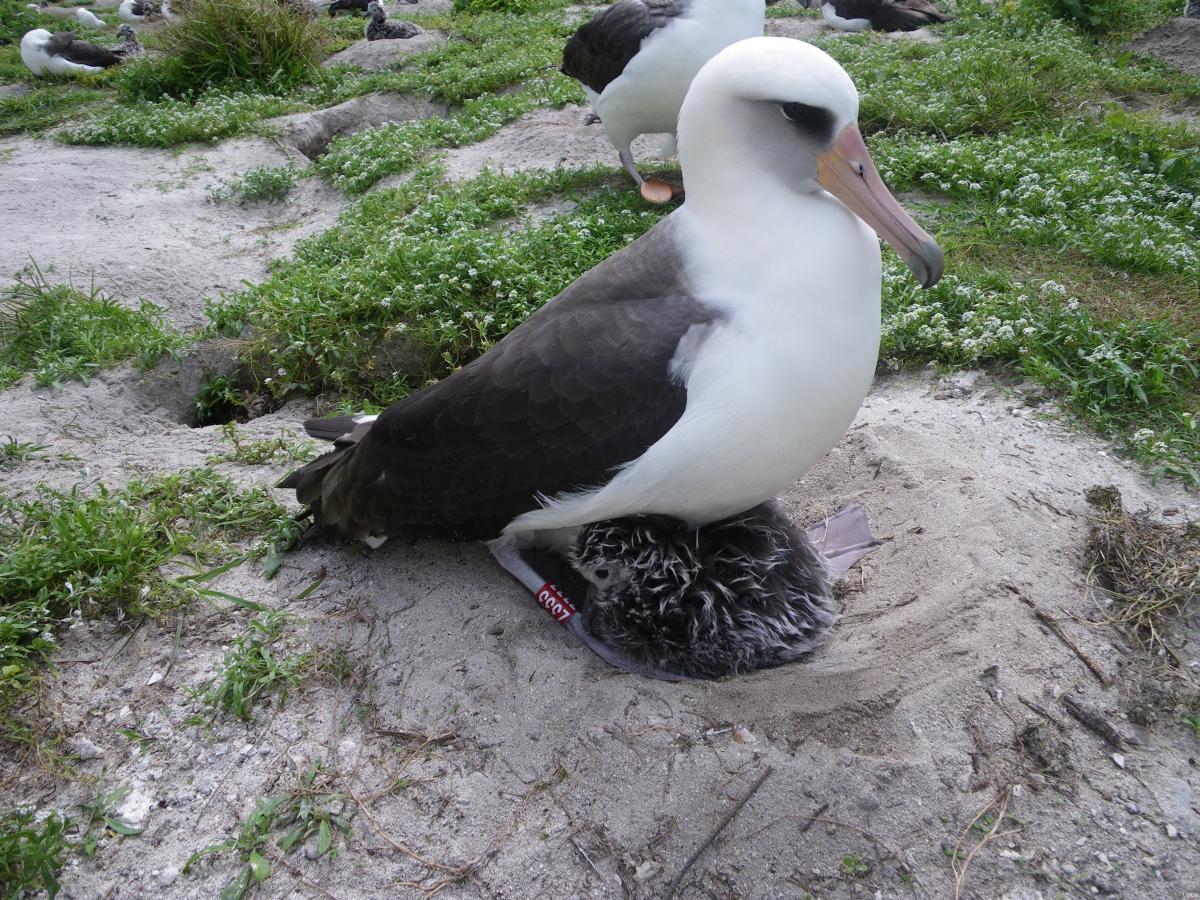
PLASTIC
Annually, adult albatross bring an estimated five tons of plastic – mistaken for floating fish eggs, squid or other seafood – to Midway Atoll and feed it to their chicks. All adult albatross and their chicks hatched at Midway have plastic in them. Below, a dead albatross reveals all the plastic it has eaten.
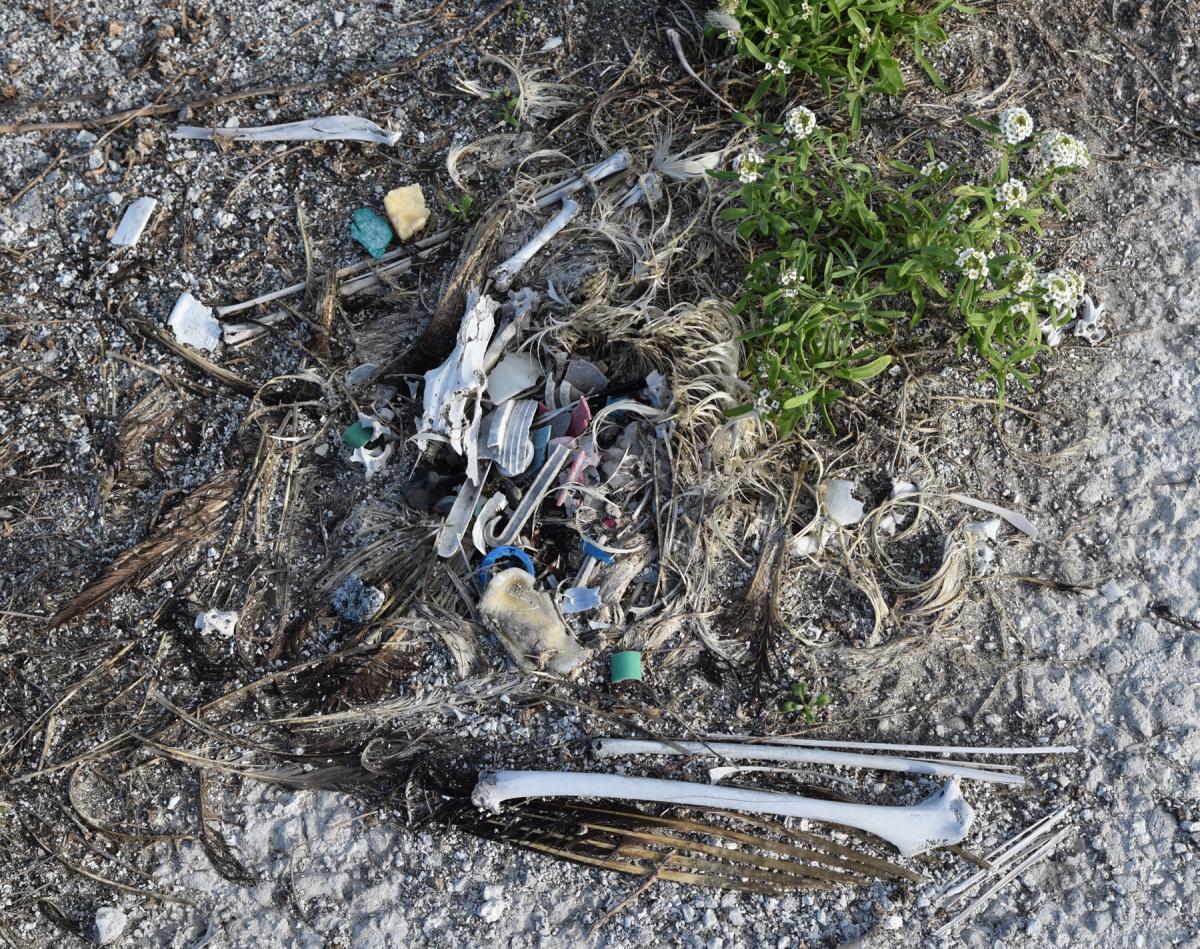
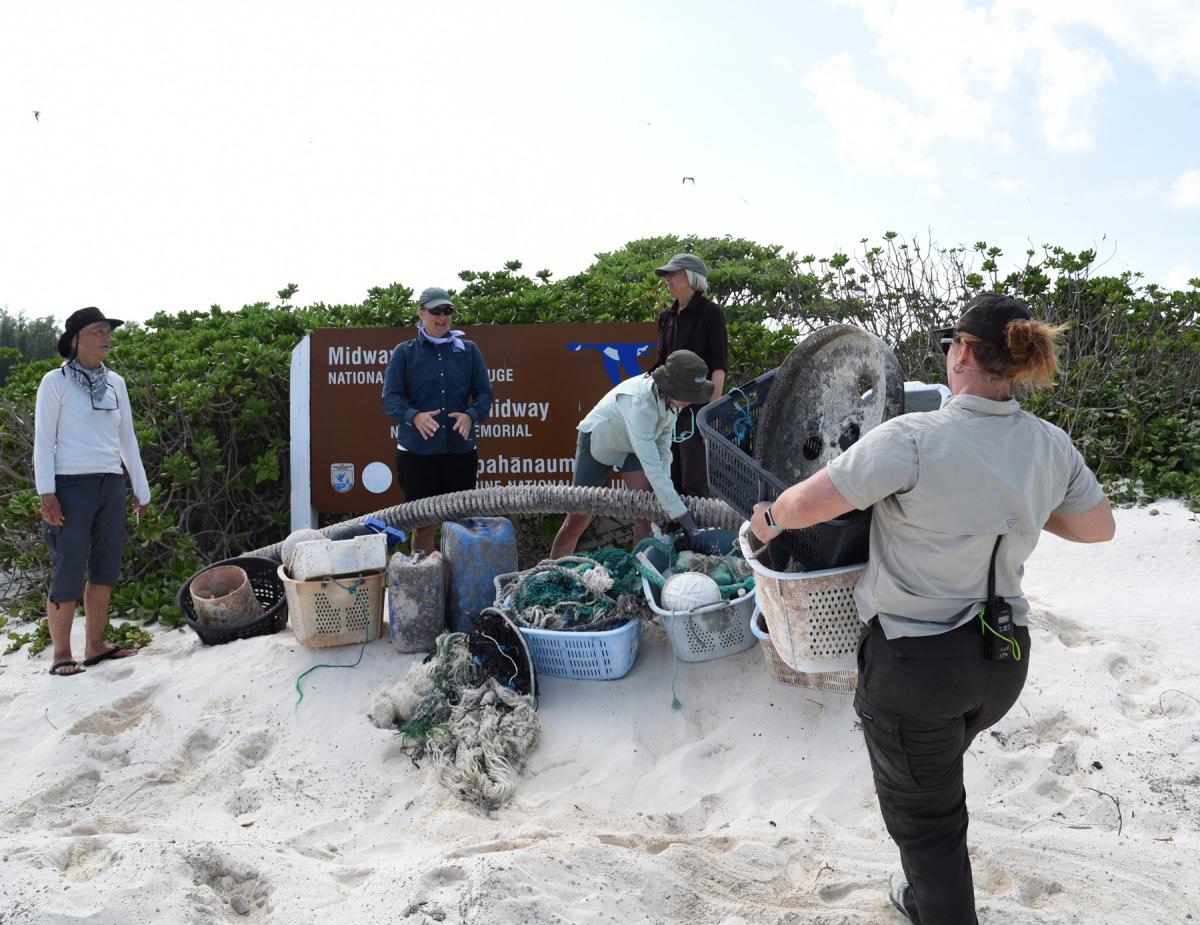
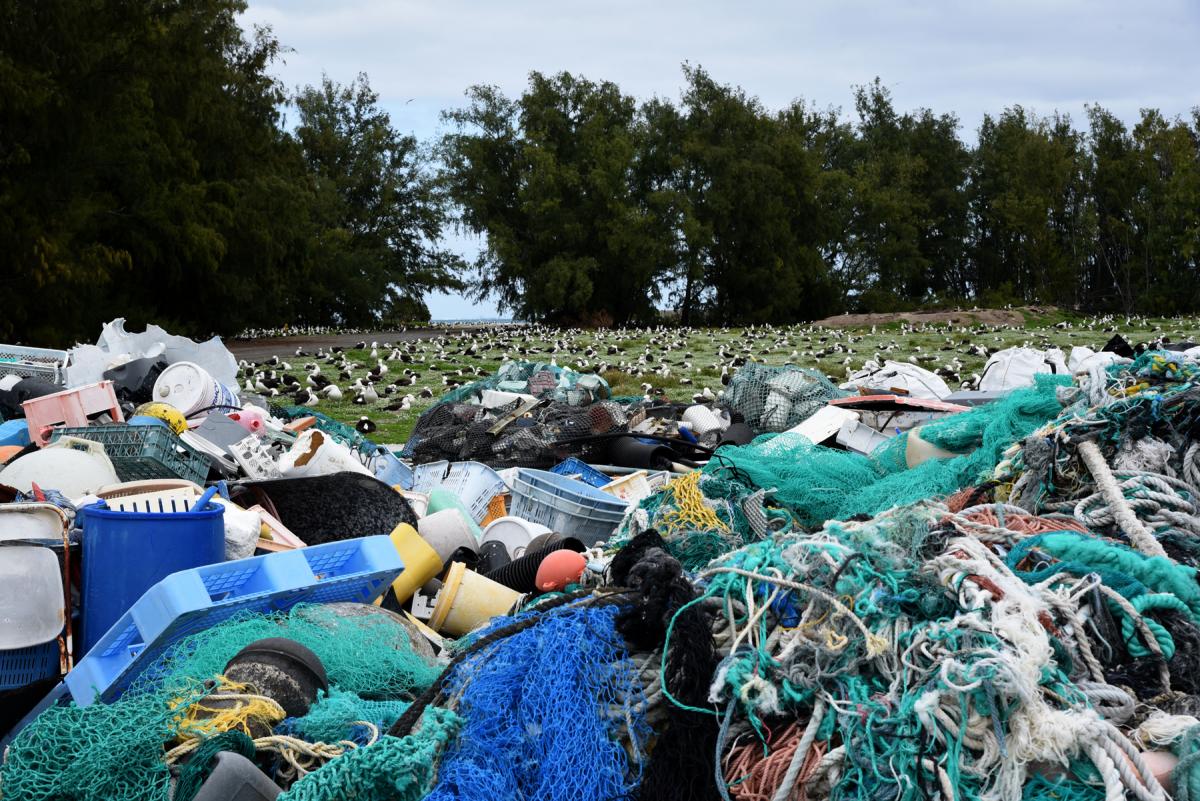
Annually scientists and visitors collect an incredible amount of plastic including large containers and fishing nets.
Check out Island Conservation’s efforts to keep the birds safe on the island here and more about Midway bird conservation.
Albatross transmitters data are available online.
Carl Safina’s book, Eye of the Albatross is a wonderful read.
Watch this wonderful video about albatross
Read more about Laysan albatross.
By Nancy Burnett, Founder of Shape of Life















